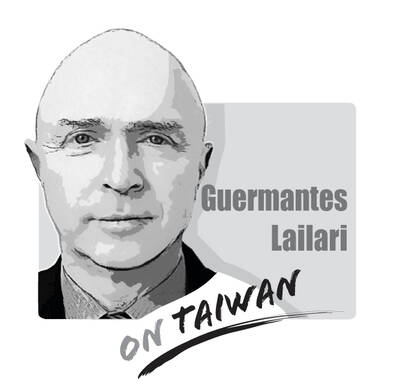The main contenders for the Chinese Nationalist Party’s (KMT) Oct. 18 chairmanship election are Legislator Lo Chih-chiang (羅智強), 55; former legislator Cheng Li-wun (鄭麗文), 56; Sun Yat-sen School president Chang Ya-chung (張亞中), 71; and former Taipei mayor Hau Lung-bin (郝龍斌), 73. Each brings distinct strengths to the race.
The election would be a battle between generations. Yet, when measured against four key benchmarks — attracting young voters, acting as a “kingmaker” in 2028, consolidating cooperation between the blue and white camps, and leading the KMT legislative caucus — no single candidate checks all the boxes.
An Apollo Survey & Research Co poll showed Cheng leading with 22.2 percent support among party members, followed by Hau at 20.5 percent, Lo at 18.7 percent and Chang at 5.3 percent. However, 26.8 percent of respondents withheld their views, leaving a significant variable in play.
Cheng and Lo, both in their mid-50s, represent the middle-aged cohort. Skilled in debate and adept at framing issues, they frequently appear on political talk shows and are effective offensively and defensively. Should either prevail, the election would highlight the KMT’s “alteration of generations.”
The KMT’s rising political stars, such as Taipei Mayor Chiang Wan-an (蔣萬安) and Deputy Legislative Speaker Johnny Chiang (江啟臣), are also in the middle-aged bracket, while many of the party’s lawmakers and councilors are in their 30s. That creates a fresher image for the party, which is favorable in expanding its appeal to younger voters.
KMT supporters also expect the party to project a younger and more dynamic profile. If a middle-aged chairman emerges victorious, the result would align with public expectations and be seen as a positive development for the pan-blue camp.
However, questions of seniority complicate matters. Hau, an experienced politician, is regarded as decent and friendly. Chang is known for his theoretical rigor and his blunt critiques of the KMT’s lack of core narratives. Yet the average age of KMT members skews older, meaning the party’s internal preferences might not reflect broader social demographics. Cross-tab analysis of the Apollo poll highlights the strengths and limitations of the three leading contenders.
For example, Hau draws most of his support from KMT members aged 75 and older, while Cheng and Lo are favored by younger and middle-aged cohorts. Yet Cheng and Lo struggle to appeal to senior members, just as Hau has difficulty resonating with younger voters. That shows the limitations each faces in broadening support across age groups.
The new chairman’s foremost task would be to win over younger and middle-aged voters to expand the party’s support base. In that respect, Cheng and Lo have an advantage: Both are positioned to play the role of “kingmaker” in 2028 and to consolidate the blue-white alliance.
Hau, while weaker in these areas, has the edge in commanding the KMT legislative caucus, where his political seniority has earned him respect from caucus whips and senior lawmakers.
Ultimately, each candidate brings distinct strengths, but falls short of meeting all main benchmarks. As such, party members might have to settle for a perceived second best, choosing the candidate who can fulfill three of the four criteria, thereby offering the KMT its best chance of securing a path to victory.
Niu Tse-hsun is a professor in Chinese Culture University’s advertising department.
Translated by Eddy Chang

Chinese state-owned companies COSCO Shipping Corporation and China Merchants have a 30 percent stake in Kaohsiung Port’s Kao Ming Container Terminal (Terminal No. 6) and COSCO leases Berths 65 and 66. It is extremely dangerous to allow Chinese companies or state-owned companies to operate critical infrastructure. Deterrence theorists are familiar with the concepts of deterrence “by punishment” and “by denial.” Deterrence by punishment threatens an aggressor with prohibitive costs (like retaliation or sanctions) that outweigh the benefits of their action, while deterrence by denial aims to make an attack so difficult that it becomes pointless. Elbridge Colby, currently serving as the Under
The Ministry of the Interior on Thursday last week said it ordered Internet service providers to block access to Chinese social media platform Xiaohongshu (小紅書, also known as RedNote in English) for a year, citing security risks and more than 1,700 alleged fraud cases on the platform since last year. The order took effect immediately, abruptly affecting more than 3 million users in Taiwan, and sparked discussions among politicians, online influencers and the public. The platform is often described as China’s version of Instagram or Pinterest, combining visual social media with e-commerce, and its users are predominantly young urban women,
Most Hong Kongers ignored the elections for its Legislative Council (LegCo) in 2021 and did so once again on Sunday. Unlike in 2021, moderate democrats who pledged their allegiance to Beijing were absent from the ballots this year. The electoral system overhaul is apparent revenge by Beijing for the democracy movement. On Sunday, the Hong Kong “patriots-only” election of the LegCo had a record-low turnout in the five geographical constituencies, with only 1.3 million people casting their ballots on the only seats that most Hong Kongers are eligible to vote for. Blank and invalid votes were up 50 percent from the previous
Japanese Prime Minister Sanae Takaichi lit a fuse the moment she declared that trouble for Taiwan means trouble for Japan. Beijing roared, Tokyo braced and like a plot twist nobody expected that early in the story, US President Donald Trump suddenly picked up the phone to talk to her. For a man who normally prefers to keep Asia guessing, the move itself was striking. What followed was even more intriguing. No one outside the room knows the exact phrasing, the tone or the diplomatic eyebrow raises exchanged, but the broad takeaway circulating among people familiar with the call was this: Trump did